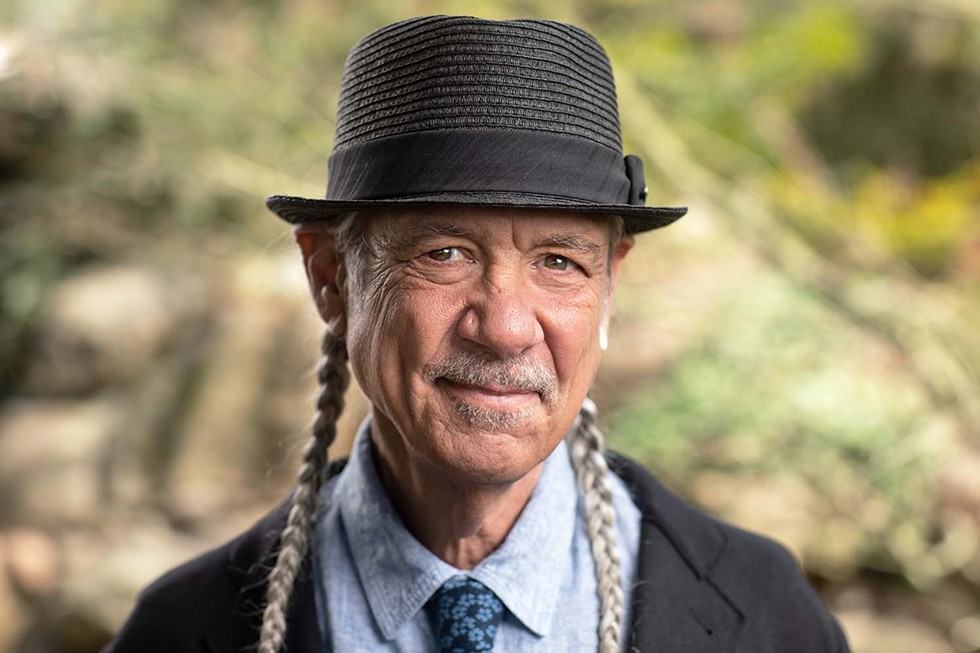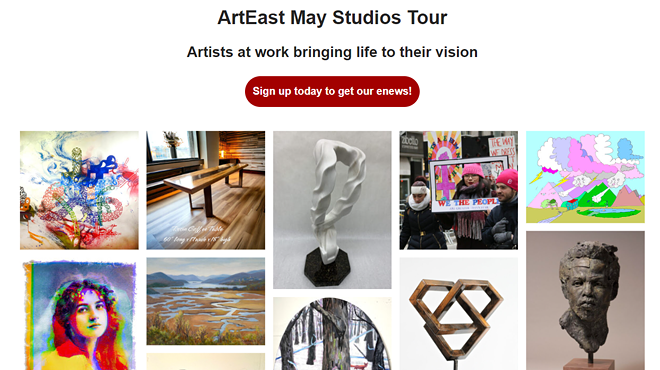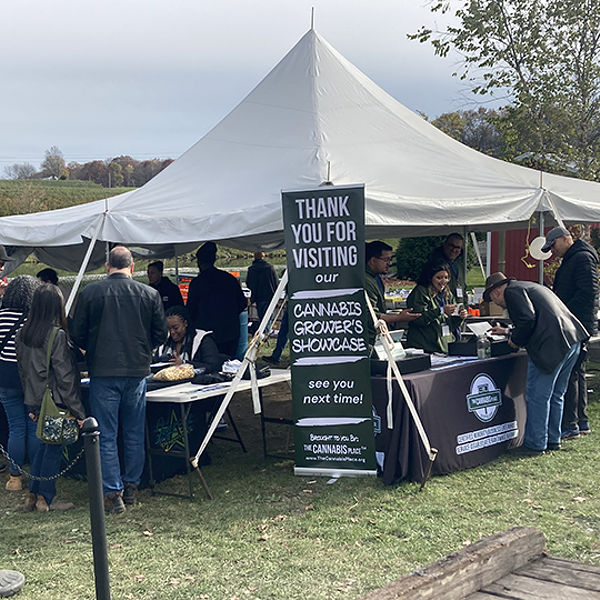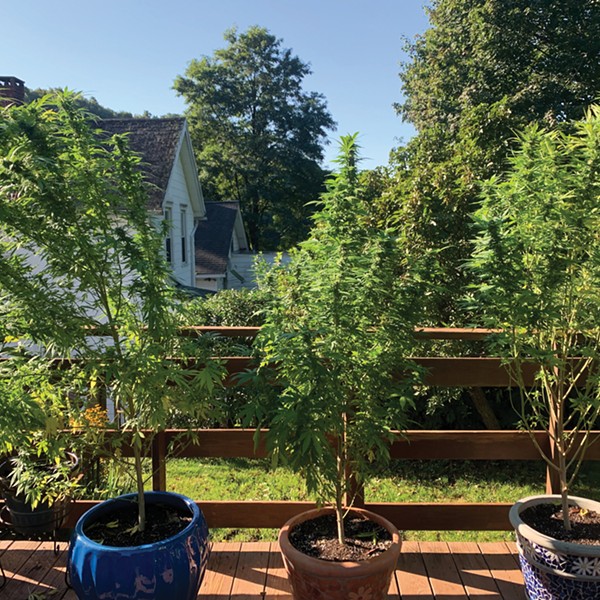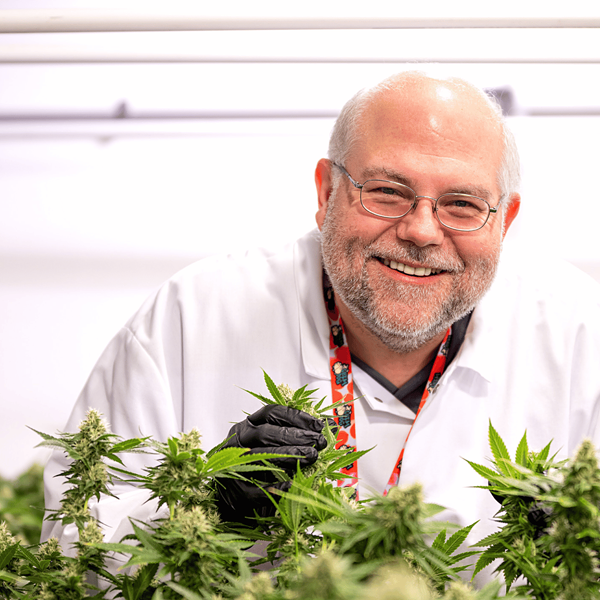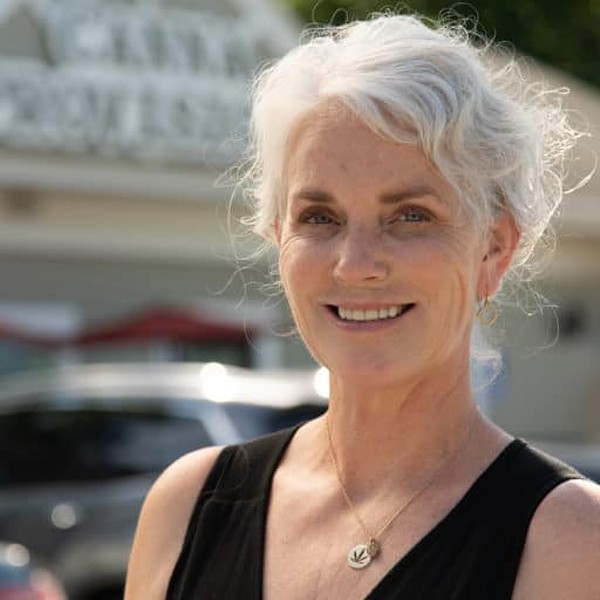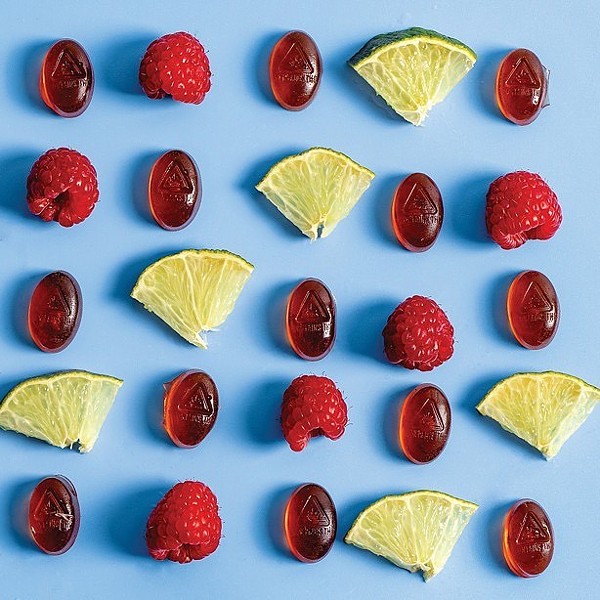It wasn’t long ago that the thought of legalizing marijuana in New York was, well, a pipe dream. This is the state that implemented some of the harshest penalties in the so-called War on Drugs; where arrests for possession were increasing as recently as 2017; and where the governor was staunchly opposed to legalization, even as other states did so and saw millions of dollars fill their coffers.
But things have changed, and fast. Earlier this year, New York enacted the Marijuana Regulation and Taxation Act, becoming the 15th state to legalize recreational weed. Constituencies as diverse as environmentalists and social justice advocates to small farmers and big business owners have lauded the bill for creating a framework for a just, equitable, and diverse cannabis market.
For cannabis activists like Steve DeAngelo, this moment has been a long time coming. The man known as the “father of legal cannabis”—an appellation bestowed by former San Francisco Mayor Willie Brown—has been a tireless advocate for ending prohibition since the 1970s. For much of that time, he’s traveled the world proselytizing the gospel of ganja and organizing a global community of cannabis advocates. Between 2006 and 2009, he founded Harborside, one of the first licensed dispensaries in the United States; Steep Hill Lab, the country’s first commercial cannabis testing lab; and Arcview Group, the first dedicated cannabis investment network.
In recent years, DeAngelo has directed his attention to the Last Prisoner Project, a nonprofit he helped create in 2019 with the aim of securing the release of all cannabis prisoners. There are currently about 40,000 people behind bars on cannabis-related charges in the United States, and thousands more worldwide. “If we’re going to create this new legal industry—and we already are, intergenerational wealth is already being created—there’s a moral duty incumbent upon us that people who are locked up in cages are freed, brought back to their families, and given the resources they need to rebuild the lives that were stolen from them,” he says.
These days, DeAngelo is spending a lot of time in New York, working to ensure that as the state fills in the regulatory details that will govern its legal marijuana market, it sticks to the lofty ideals laid out in the MRTA. “Unlike most industries that are created in boardrooms and laboratories and determined by investors and lawyers and stockbrokers, cannabis is different,” DeAngelo says. “It doesn’t start until we make it legal, so we have an opportunity to make it legal in the way we want to. And that gives us this amazing opportunity to create a different kind of industry. That possibility, that promise, is present to a degree here in New York that is not anywhere else in the world right now.”
On Saturday in Saugerties, DeAngelo will be presented with a lifetime achievement award at a Juneteenth cannabis social equity event. The River caught up with DeAngelo recently to discuss the pros and cons of the MRTA, what it’s like to live in this moment, and what work still needs to be done. The interview has been lightly edited for clarity and length.
You’ve said in the past that you got into the cannabis business as an activist. What promise did you see in it as a channel for your ideals?
What I saw then was what I still see today: A natural plant that helps us be more like the people we want to be in the innermost parts of our hearts.
When we started this, we didn’t know about industrial hemp, that cannabis could sequester atmospheric carbon, nor about all the medical uses of cannabis. Back then really all we knew was that cannabis helped us be more like the people we wanted to be—more peaceful, more gentle, more generous, more centered, more balanced—and we thought those were all qualities that the world needed.
That was the original impulse. Over time, as I studied the plant and new science was done, that conviction was reinforced with all of the practical applications of this amazing plant.
New York’s legislation has been held up as a model for creating a state-run legal cannabis industry. Obviously there is still a lot to be determined about how it will be implemented, but what do you think the MRTA got right?
I look at the MRTA as a promise that still needs to be fulfilled. Because of the sudden turnaround in political fortunes of legalization in New York, a lot of the details have not been filled in yet. For those of us who believe in a different, more progressive kind of cannabis industry than we’ve seen in other places (like my home state of California), we are going to have to be very active over the next year, engaging with all of the different boards being established and the regulatory agencies to make sure that the promise of a just and equitable cannabis industry is actually realized when the final regulations are written.
Some of the stuff I like: I love the fact that public consumption of cannabis is legal anyplace that public consumption of tobacco is legal. I hadn’t realized what a difference that makes until I was walking through New York City on my last visit with a couple of friends, and we decided to sit down and smoke a joint. We found a traffic island with a bench, pulled out a bag of weed, rolled up a joint, and blazed away right there with absolutely no fear. And I realized there’s just a powerfully destigmatizing factor: when people see you smoking weed on the street and it’s legal, and when you know you can do that, it makes it feel legal. In California we don’t have that. There, public consumption is illegal almost everywhere, and it’s amazing how much that reinforces the stigma.
I also love the promise of 50 percent social equity licenses. The idea that 50 percent of this industry is going to be reserved for the people who have been most severely impacted by the war on cannabis—that is a dramatically better allocation than we have seen anywhere else thus far.
I love the “cottage license” concept, the idea that anyone can have 300 square feet of grow space and directly retail that. I think there should be as many of those licenses as people sign up for. If you meet the requirements and you can lease a property and pass an inspection, then you get your cottage license. There are so many people who have been making their living off growing that way—small rooms of cannabis and selling directly to their clientele. They’re ready to step up and do that [legally], they just need the regulatory structure to allow it.
I also like the fact that there seems to be serious discussion of bringing legacy operators into the legal market. That needs to be accompanied by a serious amnesty provision: if we’re going to ask them to take the risk and surface themselves, we need to make it safe for them to do so. It’s very different from California, where the law to this day says if you’ve been convicted of a felony—of any type, including a cannabis felony—you may not get a cannabis license without a waiver provision. When we first started in this movement, we didn’t do it so that our neighborhood weed dealers could be put out of business by corporations—we did it so they could come above ground and do what they’ve always been doing without getting busted.
And where, if any place, did Albany lawmakers go wrong?
I really don’t like the THC tax [a tax on wholesale transactions based on the amount of THC], which I think is based on poor, shoddy science. It’s mainly based on two studies out of London, done by the same crew of supposed scientists. Both of these were self-reporting studies where they asked cannabis consumers to report what type of cannabis they had been consuming, and they had a classification system that said, basically, anybody who reported using “skunk” cannabis was considered to be consuming high-potency cannabis, but those who reported consuming anything else, including extract, hashish, or imported cannabis, was considered to be smoking low-potency cannabis. So the whole study was complete garbage. They didn’t actually measure the cannabis, and they misclassified it. [On his podcast Radio Free Cannabis, DeAngelo interviewed endocannabinoid scientist Dr. Greg Gerdeman about the issues with the London studies.]
Then you had advocates in the United States that took these studies, and have been shopping them around to various legislatures, claiming that high-potency cannabis causes cognitive impairment. There’s just no solid science demonstrating that whatsoever.
The other issue I have with it is, we know that New York has the most deeply entrenched, well-organized, toughest cannabis underground distribution system in the world. That has to always be kept in mind as we design the legal cannabis system, understanding that there will be competition between the legal and unregulated markets for some period of time, and if the legal markets aren’t put on an equal footing to compete with the unregulated markets, you’ll see the same disaster we’ve seen in California, where the underground market has actually expanded because it’s unregulated.
In all your work, especially with projects like your podcast Radio Free Cannabis and your international advocacy, you’ve been a big proponent of creating a global community of cannabis users to create what you’ve called a “different kind of industry.” Can you elaborate more about what that might look like—and what it should not look like?
An industry that lives by the values cannabis teaches us. One of those things is to be generous and share. We want a generous cannabis community that spreads the wealth broadly. Right now, most industries are created by people who already have a great deal of wealth and a privileged position in the world, and most of the real opportunities are reserved for that class of people. We have this unique opportunity with the cannabis industry to structure it in such a way that a lot of opportunity will be created for a lot of people.
We also want a sustainable industry. That means understanding the carbon footprint of the cannabis we grow and taking every measure we can to reduce it. It means using the most eco-friendly options for packaging.
And it needs to be inclusive, which cannabis teaches us to be. I’ve never been in a cannabis circle where somebody came up and everybody else in the circle said, that person looks different from us and we’re going to close them out. Even if they’re weird, even if they smell bad! We always share.
One of the tragic facts about our world is that most industries in this country are controlled by white men. We need to make sure that the industry—and not just its lower ranks, but all of it—reflects the diversity of the world we live in. There have been some disturbing trends with how we’ve seen that unfold in other places. In California, following legalization of recreational weed, the amount of diversity in cannabis companies has actually gone down from what it was during the time when only medical marijuana was legal.
This is particularly important when you consider the fact that prohibition in this country originated as a method of racial control and oppression. And it’s been implemented that way for a hundred years, basically. Often it’s marginalized communities that have borne the brunt of prohibition, and now, as this new opportunity is being created, those same communities are being excluded. Some who have been making their living in the unregulated market are even facing displacement.
So those are the main pillars: We want an industry that has economic justice in it, spreading prosperity widely, and that gives opportunities of ownership and advancement that have mostly been denied to people in this country. We want to make sure that our industry cleans up the planet and doesn’t make it dirtier, like so many other industries. This amazing plant that mother nature has given to us that at one time wakes up our hearts and souls, brings us closer to nature, and gives us the raw material to make 50,000 different products, and for every hectare of cannabis we harvest, we sequester 20 tons of atmospheric carbon. And we want an industry that’s inclusive, that looks like the people of this world, that doesn’t replicate the same system of domination that most of the world has been suffering under.
We’ve seen the MORE Act, which would end prohibition at the federal level, get past the US House of Representatives last fall, and there has been some talk about getting a new bill on the floor soon. What’s your prognosis for federal action on cannabis?
I’m eternally optimistic, but I’ll be brutally honest: Before the Biden Administration came into power, I predicted the best we could expect was benign neglect. But in fact I think we’re seeing something a little bit worse than that.
If you look at Joe Biden’s history, he has been one of the predominant proponents of the War on Drugs and mass incarceration for his entire career. He comes from the state of Delaware, which is essentially controlled by pharmaceutical companies. He has always been in the pocket of law enforcement. This is nothing unusual from Joe Biden.
And if you take a look at Kamala Harris’s career, you recognize this is a woman who has incarcerated thousands of people on cannabis charges. When she was attorney general of California and the federal government came into the state and attacked the legal, licensed medical cannabis dispensaries, not only did she completely fail to defend them, she then went on television and basically laughed about it. There were multiple occasions where Kamala Harris as a district attorney and then attorney general could’ve taken positive action on cannabis reform, and not only did she decline to do so, she kept on prosecuting people under the same unjust laws. I don’t think we can expect much else out of this administration. Until they’re gone, we need to redouble efforts at the state and international levels.
It’s clear that in crafting the MRTA, New York learned from the mistakes other states made, and took into account the various demands of its sundry constituencies. But as you say, when the OCM and Cannabis Control Board hammer out the details, that’s when the rubber will meet the road. You sound fairly optimistic about it—are you optimistic that New York’s cannabis industry won’t get sucked up into the maw of Big Capital like it has in so many other places?
I have to be—if I wasn’t optimistic, I wouldn’t be here today. When I started 50 years ago talking about making cannabis legal, people laughed. And they laughed for a long time, when legalization was this crazy, unattainable hippie dream. Nowadays, when I talk about creating a new, different kind of industry, people shake their heads and say, “Steve, you’re just a dreamer. You can’t see the way the world is.”
I’m not going to accept that, because I don’t want to live in that world anymore. I want to live in a different world, a new and better world. If we don’t imagine that world and believe in it, we will never, ever get there. So I’m not going to close the door on that world, just because we live in a less-than-ideal world now. We can always do better; we have to do better.
We’re blessed with this amazing generation of young people now who are the smartest generation of human beings who have ever walked the Earth, who’ve grown up having access to almost the full database of human knowledge and have this unbelievable power to collect information, synthesize it, grasp new ideas, and act on them. So I’m optimistic because I believe we’re heading into a brilliant new phase of human behavior and thought, when we are rediscovering plant wisdom and accessing that base of intelligence and knowledge. That is an incredibly powering thing. As we move forward to do this thing, we’re not alone—the plants and the planet are not idle bystanders. If we listen to them and take the lessons they teach us seriously, we can do this. It’s possible.







